|
“If the only prayer you ever say in your entire life is thank you, it will be enough.” - Meister Eckhart, medieval German theologian, philosopher and mystic Thank you, thank you, thank you!
That's all I can say after the touching farewell reception for me last Sunday. It feels like wind in my sails, encouragement to keep doing what is sometimes a difficult ministry of successive transitions. As I've mentioned to many of you, it is clear to me that Spirit called me into interim ministry and I have learned over the years that when spirit calls it is best to say yes. Just ask Jonah. So this is my official thank you to all of you who have sent me cards, who have offered a kind word, and who have been in collaboration with me in the ministry of Plymouth Church. It is possible that there is no greater spiritual practice than that of gratitude. Meister Eckhart said it over 600 years ago and it was true before him and to this day. There is something about the original blessing of creation and its goodness that continues as an energetic thread throughout all life and time. There is a deep inherent goodness in life and it is faithful and life giving to feel that and acknowledge that on a regular basis. That even includes the bittersweet time of endings and goodbyes. It is a good time to acknowledge the goodness of what we have known even as it is time to let go and make room for the next goodness. So, this Sunday both Jane Anne and I will engage with the congregation during worship in a ritual of passage, a formal time of release as your pastors at Plymouth Church. We will give thanks for our time together and mutually ask for forgiveness for any mistakes we have made. We will make the statement of faith that we trust that both our coming and our going is part of a larger goodness. And we will offer encouragement for each other in our next chapters of ministry and life. At the end of this month, our relationship will change. Pastor Marta will be on the job on March 1st to step into the role of Associate Pastor to teach and preach and to offer spiritual support and care. Neither Jane Anne nor myself will be available to you in the role of pastor from that point onward and that includes weddings, memorials, and baptisms. We have had our Plymouth season with you and a new season is arriving. I encourage you all to come to worship (9am or 11am) if you can this Sunday to hear Jane Anne preach and to say farewell with gratitude. And, I encourage you to be in worship on Sunday, March 5th to heartily welcome Pastor Marta. It has been a privilege and am I grateful. Blessings, JT Yesterday was the Martin Luther King holiday.
What a wonderful evolution for our country, to be officially celebrating a saint whose FBI and CIA files were thicker than the Oxford Dictionary, and who was imprisoned for his civil disobedience. Rev. Dr. King is one of my heroes. I used to listen to his speeches on drives to and from college. What inspires me is that he (and the many in that movement with him) was foremost a person of faith whose commitments and actions came directly from that faith in God. It certainly was a social gospel faith, knowing that we are called by God to address the social conditions that make for suffering and injustice, and that God affirms the freedom and dignity of all humanity. Yet, as concerned with the moral life of humanity as he was, Dr. King’s faith was deeper than simple formulas of right and wrong, or of doing good because it is nice. Dr. King’s faith was rooted in a trust and a connection with the God of the Universe, the Creator, whose majestic mountains dwarfed the manufactured goods so many seemed to prize and whose eternal presence made the existence of great civilizations as enduring as a passing breeze. And, perhaps most importantly, perhaps most often overlooked in his spirituality, is that Dr. King had a faith, had a trust, that the great eternal Creator was also the Source of Love, that somehow the universe itself is set up in love. Not love as something merely sentimental and soft, this is love understood as something deep, something rooted, something steely, something fierce, something that withstands the water hoses and the barking biting dogs while still walking on and loving the enemy, while still keeping eyes on the prize of the Beloved Community, the full realization of God’s Dream and intention for Creation. This is love as a soulforce, as a power stronger than violence, even stronger than death. I believe Dr. King would be most pleased about the commemoration of his life if it called us back to that vital faith and to the causes to which that vital faith directed him, even unto death. MLK’s life of faith is an inspiration that keeps me on the journey of following Jesus. And, since he was a church pastor and involved in a movement, MLK’s life also keeps me involved in a community of faith and believing in the church’s potential for empowering the soulforce known as love that brings justice and healing. As we each and together journey with Jesus, let’s keep the life and vision of the Rev. Dr. King close, close enough to inform us we discern our life as Plymouth Church. To conclude, a poem by the late great American poet Gwendolyn Brooks titled simply "Martin Luther King, Jr., April 4, 1968" A man went forth with gifts. He was a prose poem. He was a tragic grace. He was a warm music.... read whole poem Blessings, JT We around the church take the importance of Christmas as a given these days.
But it wasn’t always so. The Gospel of Mark doesn’t mention a word about the birth of Jesus nor was Christmas part of the early church. Some did start gathering annually by the third century for a kind of commemoration of Jesus’ birth. Eventually the Roman Church in the 4th century fixed the date of December 25th for a feast day to honor Jesus’ birth. Yet, centuries later, some of our ancestors of faith on the Puritan side of the UCC family actually forbade the celebration of Christmas as too Catholic and as an expression of inappropriate frivolity. (Of course, they weren’t very good at most any fun or festivity.) It was the 19th century influence of the Oxford Movement, of Charles Dickens, and of retailers that won the day for our modern form of a gift-giving and family gathering Christmas holiday of import. My many years around religious studies, churches, and Christmas tells me that lurking behind all of this is something deeper that makes Christmas important: the winter solstice. Christmas is our Solstice. Christmas is a connection of cosmos and Christ. Throughout history, seasonality and the movements of the stars and planets were important to peoples all around the world. All cultures knew that we are part of the earth and that tracking the earth’s rhythms is essential for life. The peoples who lived far enough away from the equator knew that there is an importance in marking the travel of the sun. Life for so many depends on the seasonal return of the sun’s light and the new life it brings. While our Easter holiday is wonderfully tied to earth through the cycles of the moon, our Christmas holiday is tied to the earth rhythm of the sun, to the return of the light. That is why it is the perfect day to celebrate the incarnation of the Christ Light in Jesus’ birth. The light of the sun comes amidst darkness and the Light of Christ also comes amidst the intangible darkness of soul and society. The sun returns when the Son is born and so the Son must be born when the sun returns. Each coming begets the birth and growth of Light and Life. While we mark December 21-22 as winter solstice, the ancient Romans marked it as…. you guessed it…. December 25th. Christmas is our Solstice. Christmas is a connection of cosmos and Christ. I look forward to sharing the return of the Light with you all. Blessings, JT It’s All Saints Day today which is also known as All Hallows' Day, hence, October 31st is Hallows' Eve aka Halloween. While some churches weirdly react to Halloween as some devilish cultural attack on Christianity, Halloween and the adjacent days are a part of Christian history, and mostly a healthy part. As my Episcopal clergy colleague Rev. Hunt Priest notes, “The three “holy days” of autumn--All Hallows' Eve, All Saints’ (Hallows’) Day and All Souls’ Day (also called “Day of the Dead”)--are invitations to spiritual practice around death, fear, and remembering those we love but no longer see. These three days offer an invitation for us to come face to face with death (Oct 31), to remember the giants of the faith (Nov 1), and to re-collect the great cloud of witnesses in our own lives (Nov 2).” While I’m usually not a big Halloween guy, I do recognize the importance of directing our attention where our culture and often our faith do not: dealing with death and loss as well as fear, and honoring the lineage of life. This annual “thinning of the veil” where death and the presence of those who have gone before is an opportune time to honor our ancestors and our ancestors of faith. And it can be an enriching and healing time for the soul. My mentors and teachers have helped me to understand the deep power of lineage and our relationship to it. In my journey and in helping others over the years, I have seen frequently a loss of life energy and liberation because of unhealed wounds, judgments, and blocks in the lineage of people. A healthy relationship of acceptance and sovereignty in relation to one’s lineage can offer a liberation and an empowerment in one’s life. I will preach on Lineage and Soul this Sunday, but in the meantime, you can do your own imaginative experiment. I encourage you to stand up for this (or, if need be, imagine yourself standing). Imagine your parents standing behind you, mother on the left and father on the right. (If you’ve been adopted, place your birth parents there as well as those who raised you.) See how that feels. Imagine leaning back into them. Any resistance? Any negative blocks? Note what you feel. Now imagine the next generation standing similarly behind your parents. And so on and so on until there is a massive pyramid of people. How each one of us relates to this image says a lot about our soul’s journey. We can bring the resources of faith to engage with our lineage. I’ll talk more about that on Sunday. Until then, let yourself be enriched by the image and presence of all those ancestors and saints who have gone before and helped bring life to this moment. What saints are standing behind you and behind Plymouth Church? Blessings, Pastor JT
"Now to each one the manifestation of the Spirit is given for the common good." - I Cor. 12:7 (NIV)
The Apostle Paul’s image of the body is one of the best metaphors of community that I have ever heard. It integrates unity and diversity. As a body of Christ, we at Plymouth Church have a common mission to bring more fully and to make more visible the Realm of God on earth. Yet, like the parts of the body, all the people of Plymouth are different and will contribute to that common mission in different ways. In the church, we use the term “call” to express the discernment of and the energetic pull to engage both our shared common call of ministry and our particular call in expressing that larger ministry. My particular call (from the early 90’s) was to serve the Realm of God through ordained ministry; leading, teaching, counseling, and preaching in the local church. For some people, being a pastor is a good match for their best ministry. Yet, ministry is for everybody in the church, not just pastors. We are all called to serve God’s mission in some way. Everybody can do something. At Plymouth, we have nearly a hundred different expressions of ministry that call for different gifts and graces. Some are quiet and behind the scenes and some are right up front in greeting and engaging others. Some are one-time projects and some are ongoing efforts that take time. Matching people to their best ministry is the goal. That’s why I want you to bring your phone to church this Sunday, September 18th (or have your smartphone or computer handy at home). God may call you on it! Here’s how: We are launching Plymouth Ministry Match, an online survey that identifies your likely best matches for ministry through Plymouth Church. In 5 minutes, you can complete that survey and receive results almost instantly including links to click on to find out more about those suggested ministries. Taking the survey doesn’t commit you to anything. It only suggests where your best service might be. It also helps leaders of ministries to know who in our community of hundreds might be suited for a given ministry. Ministry Match is set up to generate more focused and useful conversations in finding the right ministry match for you through Plymouth Church. Whether it’s fighting for a cause, welcoming people in, organizing a project, helping with creating quality worship, caring for others in need, or even maintaining the ministry of our building, there’s a ministry match for you at Plymouth Church! Join us for Ministry Match at church or online Sunday during both worship services! Blessings, JT "Never place a period where God has placed a comma." – Grace Allen
This was the key quote in my recent sermon titled “Comma Faith.” Gracie Allen left this note for her surviving spouse, George Burns, to discover after her death. George was 68 when Gracie died. She wanted him to live on and indeed he did live on, vitally, for another 32 years. I've gotten several positive comments about this sermon so I'd like to share a little further about the importance of this image, this metaphor, this understanding of faith in the United Church of Christ. A comma faith is important for the necessary evolution of faith and for the persistence of hope in the face of the difficult. While it's not exclusive to the UCC, a comma faith is essential to our evolution and we have at times excelled in it (as well as failed). I believe this comma faith is the reason that we have on many occasions been able to see, as John Robinson told his Pilgrim followers in 1620 before they sailed to North America, that “God has yet more light and truth to break forth from God's holy word.” So the UCC and its ancestors of faith have been first in many important moments of social and theological evolution, enough times that I couldn't read them all during the sermon. (Read the list here.) I value this greatly in the UCC. And a comma faith is also important during times like these of great anxiety and foreboding, whether in our personal lives or our shared life as a church, nation, or world. Here’s one experience of mine where I learned the value of a comma faith. I can still remember at age 30 (the most difficult year in my life) where I wasn't sure if I could go on living. I was divorced, living alone, driving a beater car, working menial jobs (despite two masters degrees), and feeling very lost and disappointed. Yet, somehow, a message of faith that I had shared with others as a hospital chaplain intern came through to me: to keep a flicker of a hope that someday I might have hope again. That's all I had, the hope of hope someday. I wonder how the caterpillar finds a comma faith as it moves into the chrysalis, trusting life through such a profound loss of its familiar and known form to emerge as a butterfly. Still learning this kind of faith,...... JT Pastor Hal mentioned in his pastoral letter that this recent decision of the Supreme Court could be felt as a gut-punch. Indeed, I felt it that way along with several more in recent years; a deadly riot against a secure election, the functional end of the Voting Rights Act, a President telling a sexist and racist group to stand-by, and more. There is a thread in all of these happenings. Pulitzer Prize winning author Isabel Wilkerson in her book Caste noted the power of something called “dominant group status threat”: the sense that the out group is doing too well and represents a threat to the dominant caste. For example, the single strongest demographic predictor of those who broke into the Capitol during the January 6th insurrection was if they lived in a county not where Trump won big, but where Biden won and where there was a significant decline in the percentage of the non-Hispanic white population. Make America Great Again appeals, of course, to a past idealized vision of America which inevitably is an America which was more racist, sexist, heterosexist, and generally less inclusive than the one we have and the one that is emerging. The appeal and the sinful temptation is to support one’s self esteem and to manage the anxiety of change, whether social, religious, economic, racial or environmental, with an appeal to an old status quo of white, male, Christian parental authority (aka patriarchy). Enter the recent Dobbs decision overturning Roe v Wade. New York times reporter Adam Liptak, who covers the Supreme Court, describes the five Republican-appointed justices besides Chief Justice John Roberts as “an impatient, ambitious majority,” a majority created by those driven by “dominant group status threat” energy using whatever means necessary to take us back to some version of that past. In such times, let us be clear that this is not the Way of Jesus. In such times, let us be faithful to the God of Liberation and Justice. In such times, let us keep on keeping on, toward the Beloved Community. In the midst of all the gut-punches I have been drawn to a poem by the late American essayist and poet Adrienne Rich and I offer it as an inspiration to faith: My heart is moved by all I cannot save: so much has been destroyed I have to cast my lot with those who age after age, perversely, with no extraordinary power, reconstitute the world. - JT AuthorThe Rev. J.T. Smiedendorf has been a UCC minister since 2001, serving churches in Oregon, Colorado, Wyoming, and Washington. He has a particular passion for reclaiming the earthy, embodied, and experiential aspect of Christian spiritual practice. He and his wife Allison are co-founders of The Sanctuary for Sacred Union, an inter-spiritual initiative, focused on spiritual growth, wholeness, and transformation. He will be our Bridge Associate Minister until a new settled Associate Minister is called. Last Sunday, I preached on Revelation 21:1-5, part of which says “God will wipe every tear from their eyes…” When reading it to the congregation in the wake of this week’s news from Buffalo, New York, I felt the heartbreak in this beautiful expression of God’s compassion for Her Creation as the Divine witnessed Good Friday all over again, this time in Buffalo. Maybe it was my recent coming out of a powerful retreat with other clergy in Holland, or maybe it was the jet lag, or maybe it was knowing a beloved former companion in ministry now pastors in Buffalo as a woman of color. Maybe it was all of it. Or maybe it was how Spirit has been working on me in recent years more and more to keep my heart open even in the midst of the painful and often violent consequences of human beings being out of touch with love and God and Creation. Now I know the pattern of human and collective psyche in these events. When our gun saturated culture blends with the cancer of white supremacy in a lost soul, violence and tragedy are the result. The demonic lie of projection can take root in human souls such that violence against another person or group or country becomes a siren song, a tragic temptation, an illusion of solution: “if only we or I could just get rid of or control this ‘other.’” Projecting inner tensions, fears, insecurities, and unresolved trauma onto the "other" and making them an enemy, a dehumanized object, is a lie as old as Cain and Abel and at the core of what keeps humanity alienated, in conflict, and out of step with Divine Love. And I know Jesus calls us to be conscious of all that is in us and to resist this sin of projection with an image of a plank in our own eye (Matthew 7, Luke 6). This is a spiritual practice. And there is another spiritual practice here: faithful heartbreak. Before I move to condemning a perpetrator and complaining about guns or racism or whatever truly misguided value and deeply distorted narrative needs resistance and redirection, I sense I need to feel the heartbreak. Jesus can be my exemplar, weeping for Lazarus in his grave and weeping for Jerusalem. Somehow, I suspect this is part of what keeps us human amidst the inhumanity, that keeps us closer to the Way of Jesus than the way of empire. JT AuthorThe Rev. JT Smiedendorf has been a UCC minister since 2001, serving churches in Oregon, Colorado, Wyoming, and Washington. He has a particular passion for reclaiming the earthy, embodied, and experiential aspect of Christian spiritual practice. He and his wife Allison are co-founders of The Sanctuary for Sacred Union, an inter-spiritual initiative, and he is currently earning a postgraduate Certificate in Psychedelic Therapies and Research. Read more about JT here. I wanted to let you all know that I will be gone for several weeks during May, and the good news why. I have two trips to Europe, each an exploration of what has come to be known as the ancient future of the church: what is ancient being rediscovered and newly adapted for our future vitality as church. The renewed interest and practice in Celtic and contemplative Christian practice are in recent years are two examples of ancient future. On May 6th, I will fly to The Netherlands to help lead a retreat for 15 Christian leaders from Canada and the United States. This retreat is sponsored by Ligare (ligare.org), a nonprofit which calls itself “A Christian Psychedelic Society.” The retreat is a Christ centered experiment exploring the practice of praying with the support of a plant medicine sacrament, in this case psilocybin truffles (which are legal in Holland). This work is related to postgraduate training I recently completed and to learning I have been doing for several years. There is highly suggestive evidence in the literature and archaeology (The Immortality Key, Muraresku) as well as medieval chapel art (The Psychedelic Gospels, Brown and Brown) that some Christians participated in plant medicine prayer. The second trip will occur in late May to southern France to encounter the sacred sites and the stories of the Mary Magdalene tradition and lineage. She is believed to have gone there after Jesus’ crucifixion and the Resurrection experiences to spread the healing and teaching of the Good News. Growing up as a United Methodist, I didn't learn anything about Mary Magdalene except that she was someone whom Jesus helped and seemed to be around at the end of Jesus’ life. What I've learned so far as an adult is that most of what I was told is either extremely limited, highly skewed, or outright false (such as the accusation that she was a former prostitute). More recent scholarship as well as the discovery of other early Christian texts like the Gospel of Mary indicate that she was much more, perhaps Jesus’ best student and even partner (The Meaning of Mary Magdalene, Bourgeault). Both of these trips are for the purpose of learning what modern Christianity may have lost in ancient tradition and how it can be incorporated in a vital future. This is what makes both trips an exercise in ancient future exploration as well as an expression of The Sanctuary for Sacred Union project that I co-founded with my wife Allison which seeks to uplift the Divine Feminine and focus on the direct experience of the Living Christ. I will be around May 1st and 15th but gone the other Sundays of May. I look forward to sharing more of what I learn on these trips upon my return. Blessings, JT AuthorThe Rev. JT Smiedendorf has been a UCC minister since 2001, serving churches in Oregon, Colorado, Wyoming, and Washington. He has a particular passion for reclaiming the earthy, embodied, and experiential aspect of Christian spiritual practice. He and his wife Allison are co-founders of The Sanctuary for Sacred Union, an inter-spiritual initiative, and he is currently earning a postgraduate Certificate in Psychedelic Therapies and Research. Read more about JT here. Breathe in, breathe out. Which is better? More necessary? Neither, of course, both are necessary to life. If you try to inhale and hold, what happens? A sensation, a force, shows up that wants something else. The held breath wants a complement, the CO2 buildup inspires a tension, a drive of energy to exhale it, to complement the inhale. I’ve used this breathing cycle illustration in my preaching recently and will again this Sunday. It is simply the best teaching tool that I know of for connecting people with the basic truth of polarities. Gestalt therapist Barry Johnson is credited with originating a systemic lens called polarity thinking that tracks the principle of complementarity. It’s a systemic view that helps us see the plot of the story of a person, a relationship, or a collective in terms of poles and to then move the story in the direction of an integration of poles that generates vitality and health. Polarities are simply the base interdependent energies or values in a given issue or system. Like the inhale and exhale, they do not resolve and are not "either/or" choices. Polarity thinking involves "both/and" thinking in an attempt to create a virtuous cycle (inhale and exhale) where both energies are leveraged for the greater goal (adequate oxygen + lowered CO2 = vitality). When a pole (value) is neglected and feared while its opposite is idolized and inflated, you have a polarization that leads to a vicious cycle. For example, if the common good and shared responsibility are always pejoratively called “communist” and individual freedom and choice are always seen as pure and good (like the political organization Freedom Works does), the outcome will be a vicious cycle that leads to diminished resources for most (and eventually all) in a disorganized and/or dog-eat-dog world. The opposite, of having only conformity and the collective, will also produce a vicious cycle. We need both freedom and responsibility, both the individual and the group. It is always a matter of AND, never "versus." This pole AND that pole in search of a virtuous cycle. Why share about this? Because solutions to our personal and collective struggles rarely come from neglecting or demonizing one of the poles or values. Because when we see others, ourselves, and collectives from this point of view, we can see them more compassionately and creatively as we see them trying to meet their needs or express their values, but tragically and painfully excluding something out of fear and shadow projection. Polarization is a sign of a system poorly and painfully meeting its needs through exclusion. I believe the Good News of the Gospel is profoundly inclusive. The truth that sets us free and that fills us to the brim (our Lenten theme) is a truth that integrates energies, poles, and values for the purposes of Life. See if in your Lenten reflections about missing the mark in your life, in our church, or in our nation if there might be an active polarization with a dominant pole and a demonized or neglected pole. JT AuthorThe Rev. JT Smiedendorf has been a UCC minister since 2001, serving churches in Oregon, Colorado, Wyoming, and Washington. He has a particular passion for reclaiming the earthy, embodied, and experiential aspect of Christian spiritual practice. He and his wife Allison are co-founders of The Sanctuary for Sacred Union, an inter-spiritual initiative, and he is currently earning a postgraduate Certificate in Psychedelic Therapies and Research. Read more about JT here. 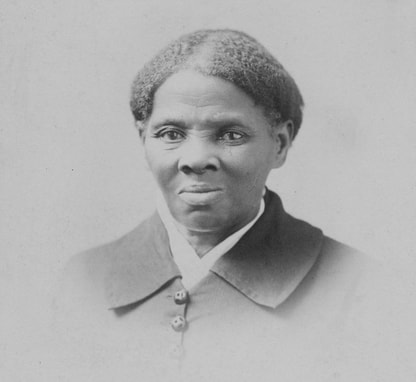 By Unknown photographer - https://www.harriettubmanhome.com/, Public Domain. By Unknown photographer - https://www.harriettubmanhome.com/, Public Domain. Of the important things I’ve learned about being a white-identified person in the USA, one stands out this month: a focus on racism and the voices and experiences of color is always optional for me. Being white has been and still is a lot like moving with the current of a river, that is, if I don’t actually make an effort to learn, to seek out, and to act to heal racism and to pay attention at that level, I can just drift along unconsciously being white (and male and straight). People of color (or other less centered groups) don’t have that privilege. It’s always there and conscious. That’s why Black History Month is so important. It is a discipline, a structure that calls the culture back to hearing American history that’s been neglected and hidden. It calls us back to seeing all Americans and to drawing the circle wide. Alban At Duke Divinity School, an educational resource for churches, offers this helpful reminder: The annual celebration known as Black History Month began as “Negro History Week” in 1926. Historian Carter G. Woodson picked the timing for this commemorative week to coincide with the birthdates of Abraham Lincoln and Frederick Douglass, two figures who were greatly respected among African Americans in the early 20th century… Contemporary conversations about race, justice and equity lack substance when we do not know and appreciate history. Likewise, our appreciation for the Christian tradition requires us to have a complete vision of our past. The roots of Black history in Christianity extend well past 1619, when the first enslaved Africans arrived in Jamestown, Virginia. In Acts 8, Philip evangelized an Ethiopian eunuch, who carried the gospel back to Ethiopia. In Mark 15:21, Simon of Cyrene was compelled to carry Jesus’ cross. Cyrene was a city in eastern Libya, in north Africa. Moses’s wife Zipporah, according to Numbers 12, was from Cush, an ancient name for Africa. These are just a few of the biblical stories that highlight the gift of Black history – and early church historians agree that Augustine and Tertullian were also people of African descent, even though no one knows how they looked. As we celebrate Black History Month, how might our thinking be informed if our historical narratives – along with the images in our Bibles and in our churches – more accurately reflected the contributions of a multicultural “cloud of witnesses”? JT AuthorThe Rev. JT Smiedendorf has been a UCC minister since 2001, serving churches in Oregon, Colorado, Wyoming, and Washington. He has a particular passion for reclaiming the earthy, embodied, and experiential aspect of Christian spiritual practice. He and his wife Allison are co-founders of The Sanctuary for Sacred Union, an inter-spiritual initiative, and he is currently earning a postgraduate Certificate in Psychedelic Therapies and Research. Read more about JT here. An elder fish passes by two young fish and says, “Hey, how’s the water today?” A few moments later one of the young fish turns to the other and says, “What the hell is water?” This old story is a wonderful metaphor for unconscious realities. Whether in our family systems or our social norms, powerful realities can remain invisible and therefore beyond the reach of examination and reform. Since we’ve always known them, we might not even see they are there. MLK Day, like Christmas, is not the only time to seek the healing of racism, but it does serve at least as one reminder. And racism, or perhaps racial identity, has been like the unconscious water we swim in if we are white. While people of color have been aware daily of the waters of racial identity, white folk have the option, the privilege really, to not see or think of it. Over the many decades and centuries, white folk could view themselves as the norm. The old box of Crayola crayons had a salmon-pink-peach-ish color they called "flesh," as did a box of Band-Aids. This is all part of swimming unconsciously in the waters of white supremacy where white is normal, centered, and right. If you are white, ask yourself “when did I first know I was white?” Some of us white folk might have a hard time answering that because white norms were unconsciously assumed. People of color can usually tell you when they knew they were identified as black or brown or red. By conscious memory, my knowing started when I was a toddler. My mother volunteered at a migrant farm worker shelter and took me along and I played with kids with light brown skin who spoke a different language. I’m still working on being conscious of the racial waters of whiteness and white supremacy, still trying to see how the things I think, say, or do might keep white identified, Euro folk as the more valuable centered norm. I was never raised explicitly or intentionally to see people of color as less than me, less than white, but, because of the unconscious American cultural waters I swam in, it happened at some level anyway. I’m hoping to be an elder fish one day who knows how to fully be aware of the waters in which I swim, the waters in which we all swim. Jesus said that “the Truth will set you free” (Jn 8:32). This is true collectively and individually, and in the matter of racial unconsciousness for white folk. Through conversation, reading, and reflection may all white folk awaken to their whiteness so that we can all be free. In honor of Rev. Dr. Martin Luther King, not to mention the women leaders like Coretta Scott King, JoAnn Robinson, Fannie Lou Hamer, and many others who sought and acted for the Beloved Community, let us faithfully go and do likewise. JT AuthorThe Rev. JT Smiedendorf has been a UCC minister since 2001, serving churches in Oregon, Colorado, Wyoming, and Washington. He has a particular passion for reclaiming the earthy, embodied, and experiential aspect of Christian spiritual practice. He and his wife Allison are co-founders of The Sanctuary for Sacred Union, an inter-spiritual initiative, and he is currently earning a postgraduate Certificate in Psychedelic Therapies and Research. Read more about JT here.  Swanson, John August. Shepherds, from Art in the Christian Tradition, a project of the Vanderbilt Divinity Library, Nashville, TN. ]. Original source: JohnAugustSwanson.com - c1985. Swanson, John August. Shepherds, from Art in the Christian Tradition, a project of the Vanderbilt Divinity Library, Nashville, TN. ]. Original source: JohnAugustSwanson.com - c1985. You might have memories that form a family and/or church story of "here’s what we do" on Christmas Eve or Christmas Day. We want them to happen. We plan for them and know what to expect. Here’s something unexpected: Christmas is not about the past, but about the future. As much as we drift toward the fondly remembered past or toward a certain predefined form of Christmas, the original Christmas stories from the Gospels of Matthew, Luke, and even John speak of God doing a new thing, an unexpected thing through unexpected people in an unexpected way. Consider the stories of Mary, Elizabeth, Joseph, or even Zechariah: the unexpected moment needed for new life to come. Our tradition is meant to be a living one that calls us to be in our ancient stories anew, to trust, amidst life’s unexpected events, personal and historical, that Spirit can move anew to birth the Christ Presence anew. New births of life and love can and do occur, even when the innkeeper of our hearts and minds and imaginations says there is no room. Will we make room for the unexpected? Joyful or challenging in their appearance, will we trust the GodMystery is with us and able to help us make something new of the unexpected? We’ve already begun by creating new forms of meeting and worship amidst the pandemic. Let’s make room for the unexpected, even the worrisome kind, and allow for the unexpected ways that God’s Light and Love is coming to be, even amidst the darkness. I pray for a powerful unexpected arrival of new Light and Life for us all this season. Blessings, Pastor JT AuthorThe Rev. JT Smiedendorf has been a UCC minister since 2001, serving churches in Oregon, Colorado, Wyoming, and Washington. He has a particular passion for reclaiming the earthy, embodied, and experiential aspect of Christian spiritual practice. He and his wife Allison are co-founders of The Sanctuary for Sacred Union, an inter-spiritual initiative, and he is currently earning a postgraduate Certificate in Psychedelic Therapies and Research. Read more about JT here. 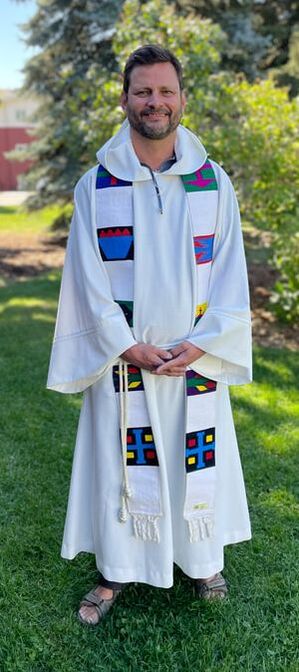 Grace and peace to you all. This is J.T. Smiedendorf, your new Bridge Associate Minister. I’m here to be one of your pastors until the Associate Minister Search Team finds their candidate, the church votes to confirm that candidate, and that candidate arrives at Plymouth Church to begin their ministry sometime next year (maybe summer or fall). Being a Bridge Minister means I am not a candidate for this position. I am here to be with you on the Spirit journey, to be a part of your ministry, your staff, and your clergy. Whether it be preaching, teaching, leading worship, calling you or meeting with you, or advising and supporting ministry teams, I’m here to help. In many years of ministry, I’ve been a chaplain, Associate, Senior, Co-Pastor, and Interim Minister. At this point, Spirit has called me into interim ministry, yet another of Spirit’s surprises that are right for me. I hope that my ministry and life experience will be of service to you all. I’ve already met a good number of you and some of you have seen me online or even spoke with me on the phone. I’ve enjoyed it and I look forward to getting to know you more. As for me, I live outside of Boulder in the foothills with Allison, my wife, and our cat, Isabella. I grew up in southwest Michigan in a small town as the youngest of three sons. I grew up going to and active in a United Methodist church before leaving for the UCC as an adult in 1995 (after I attended seminary). Academia and book learning have been helpful, but most helpful has been my life learning through recovery from divorce, sitting in men’s circles, and being in deep ritual and retreat settings. The heart of the Gospel to me is the Divine Force that moves to liberate, to heal, and to make people and cultures whole so that the interdependent web of Life might flourish (justice, peace, and the integrity of Creation). I’m glad to be with you. Let’s see what Spirit can do in and through us all. Blessings, JT AuthorThe Rev. JT Smiedendorf has been a UCC minister since 2001, serving churches in Oregon, Colorado, Wyoming, and Washington. He has a particular passion for reclaiming the earthy, embodied, and experiential aspect of Christian spiritual practice. He and his wife Allison are co-founders of The Sanctuary for Sacred Union, an inter-spiritual initiative, and he is currently earning a postgraduate Certificate in Psychedelic Therapies and Research. Read more about JT HERE. |
Details
|
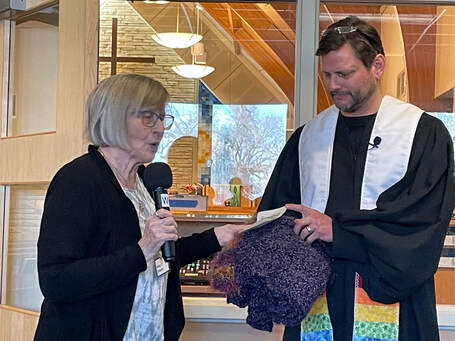
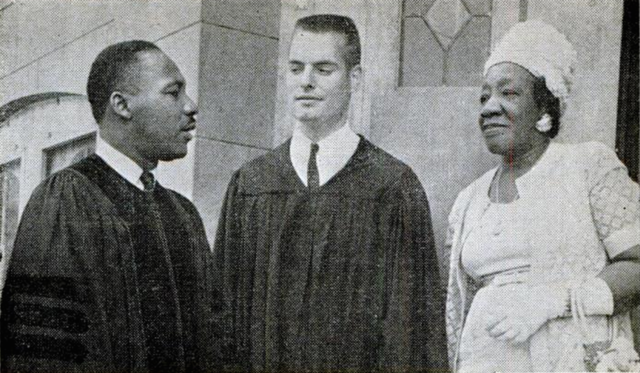
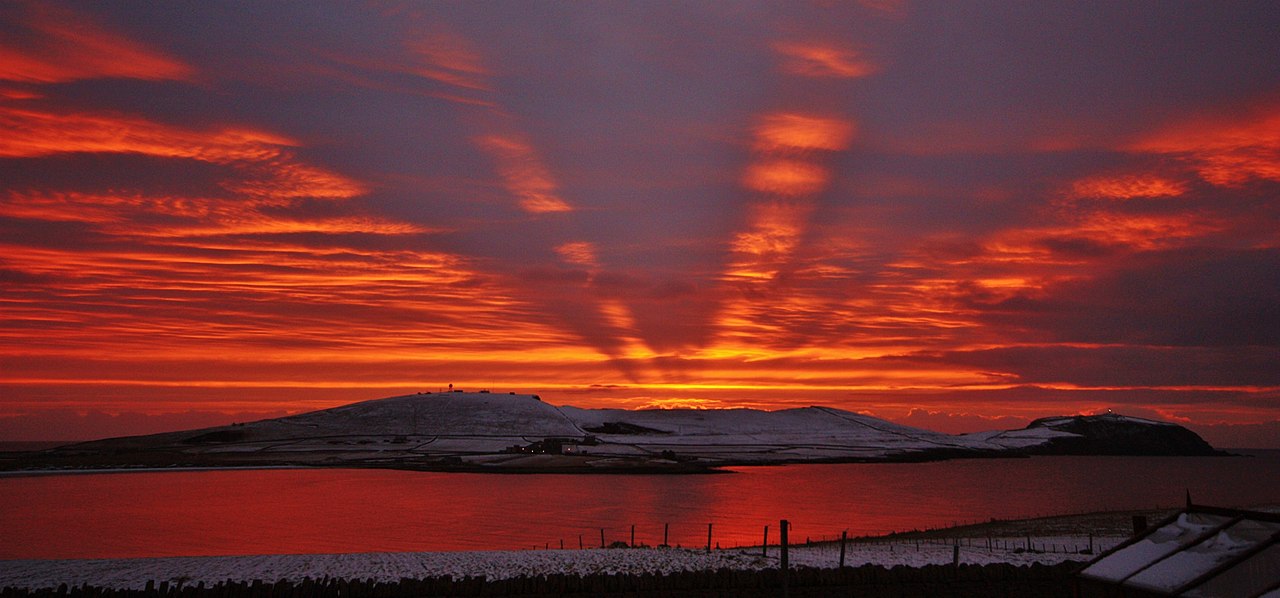
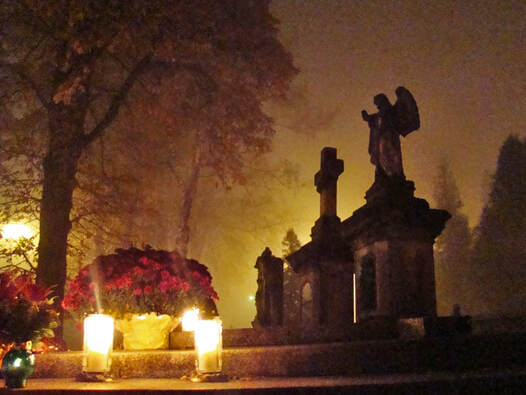
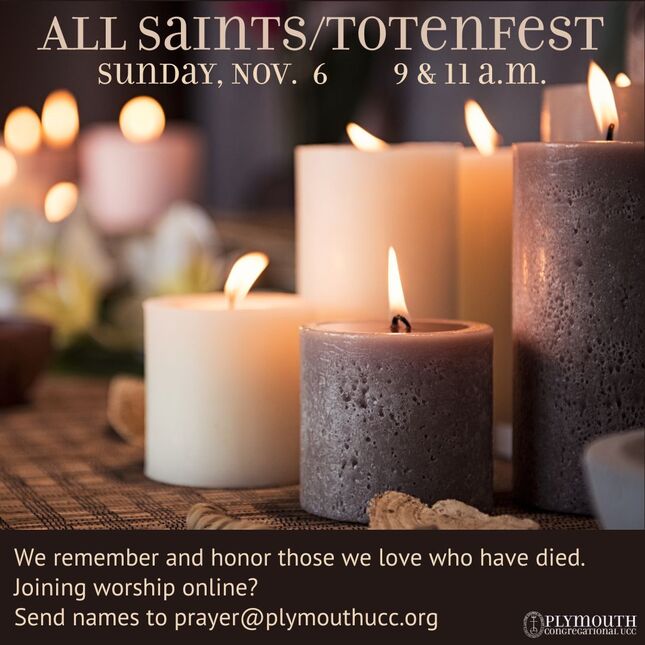

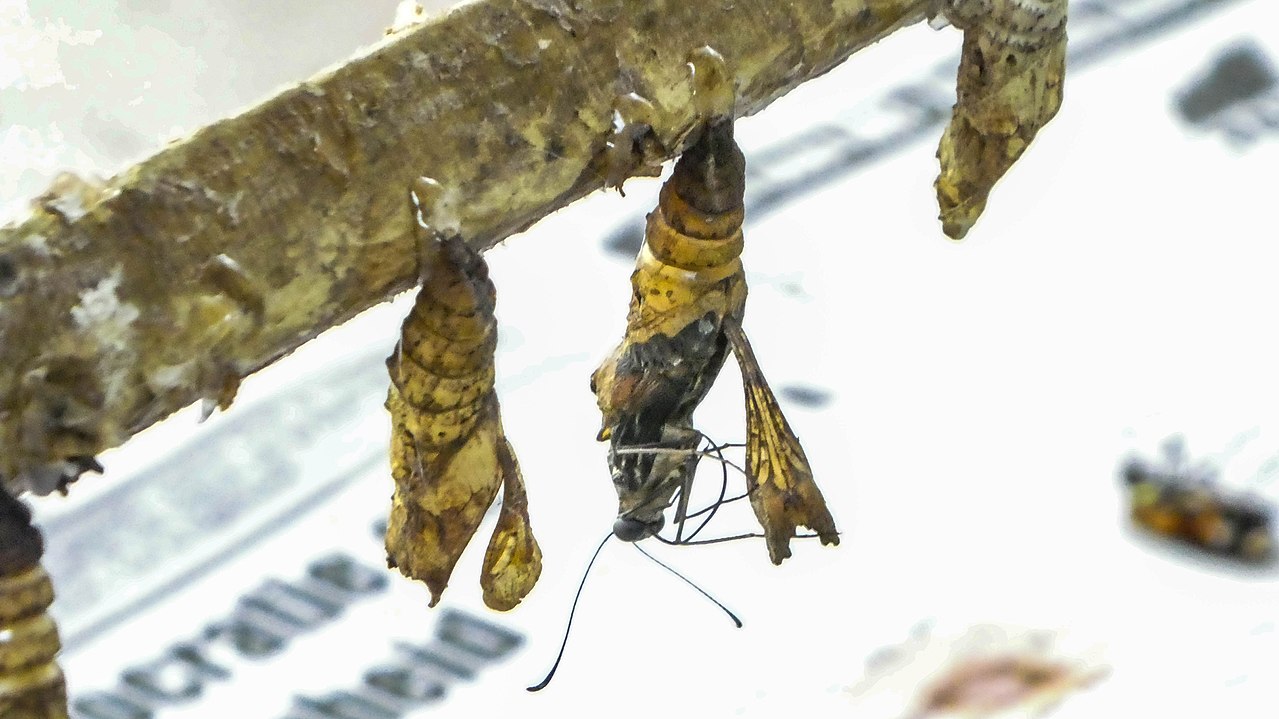
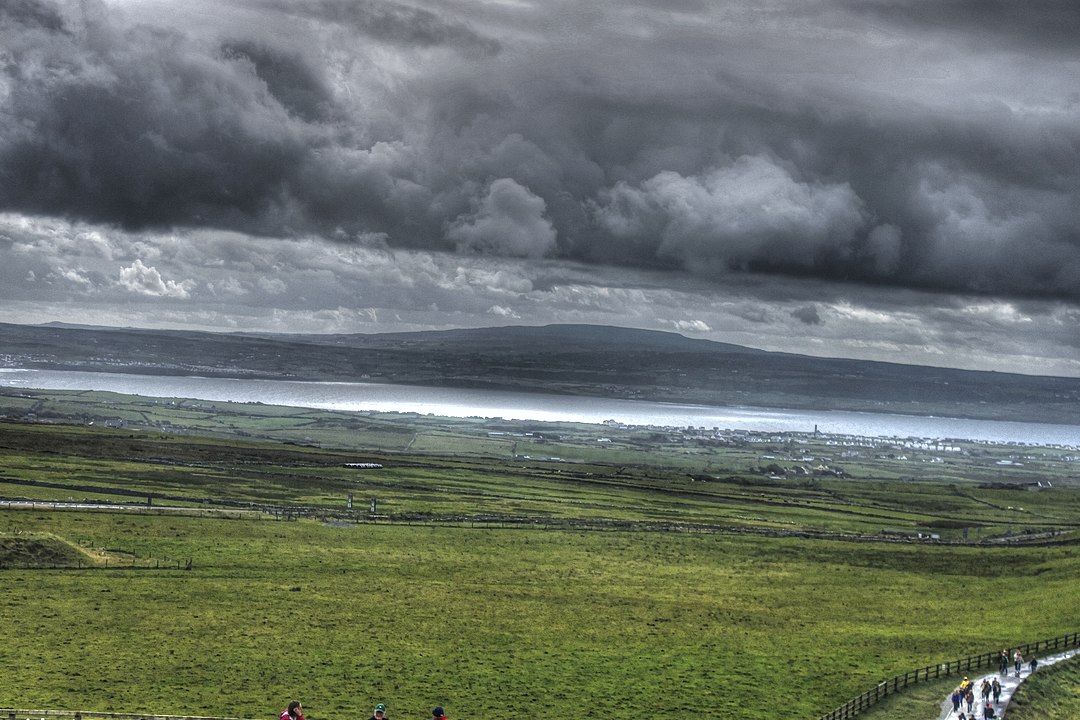
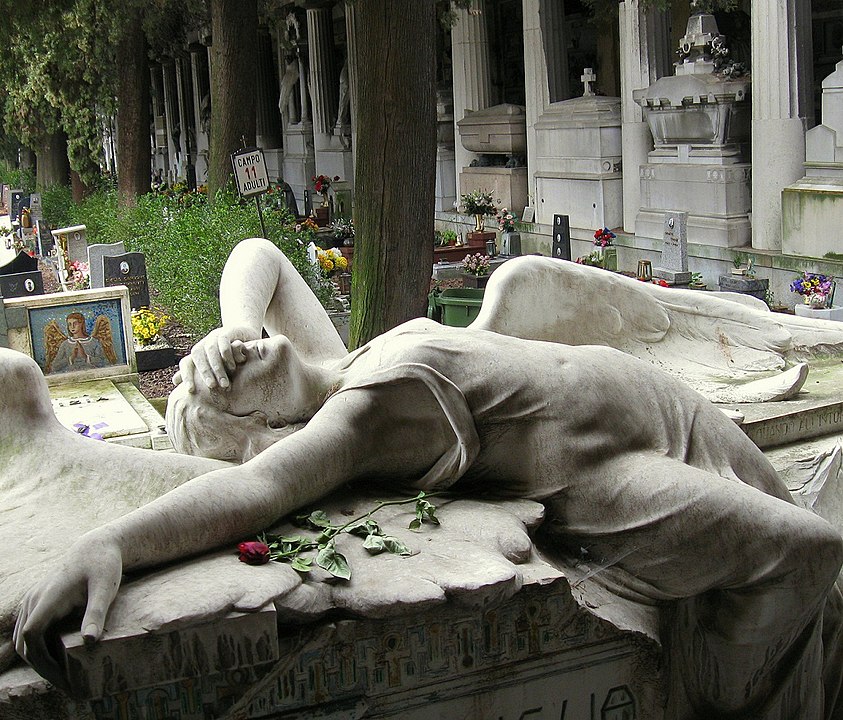
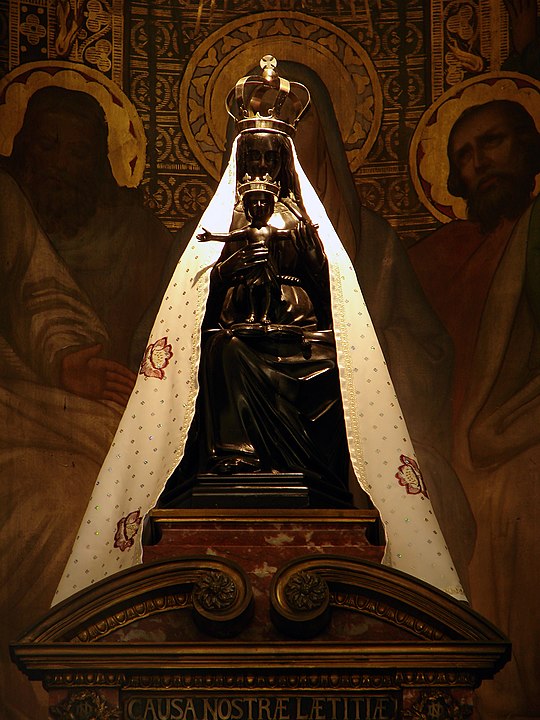
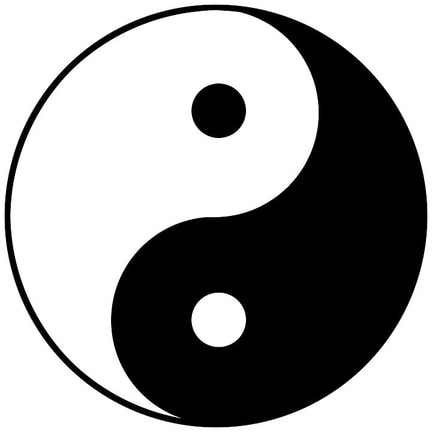
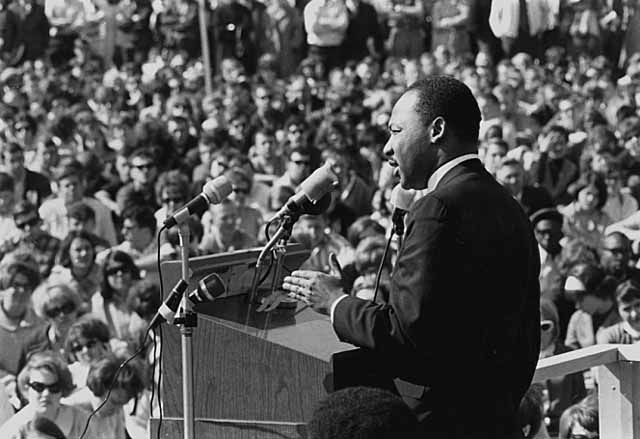
 RSS Feed
RSS Feed